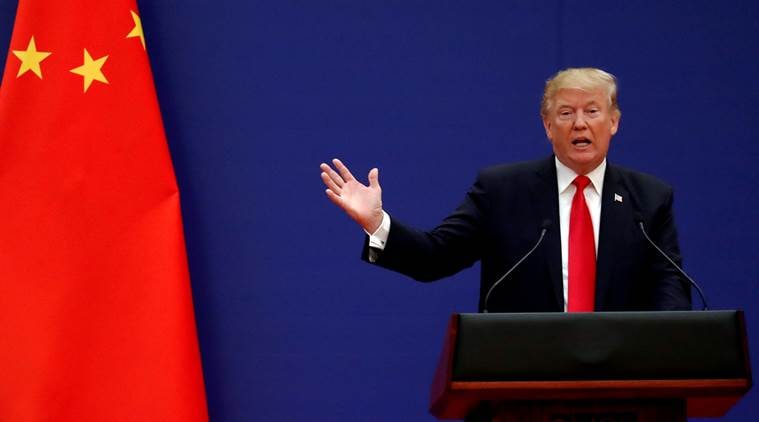
The US-China trade fight, that has been raging for a few months now, shows no signs of receding and the slugfest has only intensified this month.
The United States has maintained that Beijing has apparently reneged on its earlier commitments in trade negotiations, even as it swooped down with double tariffs on nearly USD 200 billion worth of Chinese goods on May 10.
Beijing retaliated.
It raised tariffs on USD 60 billion worth of American exports. Raising the stakes higher, the United States on Monday spelt out plans to impose 25 per cent tariffs on the USD 300 billion or so of Chinese goods that the country hasn’t already targeted.
What makes the situation even dicier is the string of events that just two weeks seemed to suggest that the world’s two biggest economies were moving towards a compromise of sorts.
Let’s take a look at what’s on:
Why are US and China fighting?
The US has accused China of employing predatory tactics in a bid to give Chinese companies an edge in advanced technologies such as artificial intelligence, robotics and electric vehicles. As per the US, some of China’s tactics include hacking into US companies’ computers and database to steal trade secrets, forcing foreign companies to hand over sensitive technology in exchange for access to Chinese markets and unfairly subsidizing Chinese tech firms.
On his part, US President Donald Trump has repeatedly brought to attention America’s huge trade deficit with Beijing, which stands at a record $379 billion last year. This, the US President blames on weak negotiations by previous US governments.
The back and forth in tariff wars started last July when Trump began gradually imposing tariffs on Chinese imports. After yesterday’s tariff increase, the US is now imposing 25 per cent taxes on at least USD 250 billion in Chinese goods. Beijing has countered it by selectively targeting at least USD 110 billion worth of American imports, such as soybeans. This seems to be a deliberate effort to cause damage to Trump supporters in the US heartland.
Until the escalation last week, both US and China seemed to be making considerable progress.
However, roadblocks remained.
US contention is that any deal will China needs to be strictly enforced so that Beijing lives up to its promises, which China has failed to do.
Are any resolutions in sight?
Not as easy as it may seem. Both countries have a win some and lose some prospects. While China’s economy is decelerating and hurt Chinese exporters, the trade tensions have also jeopardised US stick market tally and rattled financial markets. According to the International Monetary Fund estimates, Chinese economic growth may slip from 6.6 per cent last year to 6.3 per cent in 2019 and 6.1 per cent in 2020.
On the other hand, China’s retaliation is inflicting pain on American farmers, a key part of Trump’s political base.
Congressional Democrats and business groups are suggesting that US should eventually hold out for a deal that pushes China to actually change their behaviour, reform their economy and open up to foreign companies.
From China’s perspective, even though President Xi Jinping isn’t answerable to voters directly, he still faces pressure to not give into US demands. The two countries are expected to resume talks that broke off Friday but haven’t scheduled anything yet. Trump has stated that he may meet Xi Jinping in late June at the G-20 summit in Osaka, Japan.
(With inputs from Reuters)